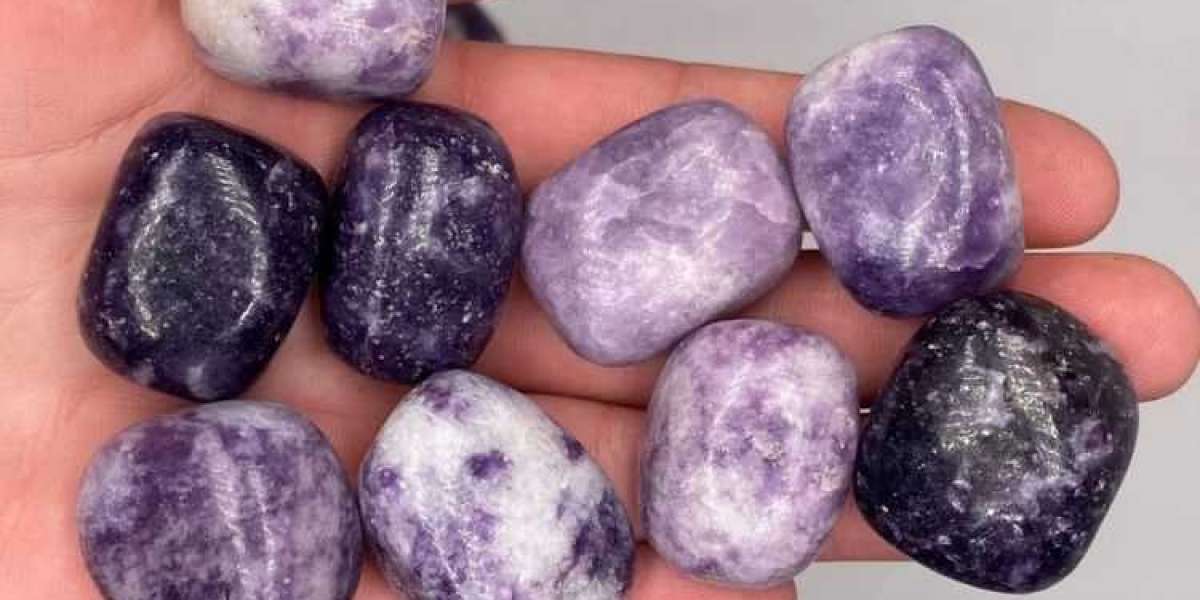The global lepidolite market size reached approximately USD 12.49 billion in 2023. The market is projected to grow at a CAGR of 27.8% between 2024 and 2032, reaching a value of around USD 113.55 billion by 2032. This remarkable growth is driven by the increasing demand for lithium-ion batteries, which rely on lepidolite as a key source of lithium. In this article, we will explore the rise of lepidolite and its growing importance in the lithium industry.
Lepidolite: An Overview
Lepidolite is a lithium-rich mineral that belongs to the mica group. It is characterized by its pink to purple color and is often found in granitic pegmatites. Lepidolite is composed of potassium, lithium, aluminum, and silicon, with lithium being the most valuable component. Due to its high lithium content, lepidolite has become a sought-after mineral for various industrial applications, particularly in the production of lithium-ion batteries.
The Growing Demand for Lepidolite
The demand for lepidolite has been steadily increasing in recent years, driven by the growing popularity of lithium-ion batteries in consumer electronics, electric vehicles, and energy storage systems. Lithium-ion batteries are known for their high energy density and long cycle life, making them ideal for use in portable electronic devices and electric vehicles. As the demand for these products continues to rise, so does the demand for lepidolite as a source of lithium.
Lepidolite Mining and Extraction
Lepidolite is typically mined through open-pit methods, with the ore being extracted using heavy machinery. Once the ore is extracted, it is processed to extract the lithium content. This process involves crushing the ore into smaller pieces and then subjecting it to a series of chemical treatments to extract the lithium. The extracted lithium is then further processed to produce lithium carbonate or lithium hydroxide, which are used in the production of lithium-ion batteries.
Industrial Applications of Lepidolite
Lepidolite has a wide range of industrial applications, thanks to its unique properties. In addition to its use in lithium-ion batteries, lepidolite is also used in the production of ceramics, glass, lubricants, and other industrial products. Its pink to purple color also makes it a popular gemstone, used in jewelry and ornamental objects.
Challenges and Opportunities
Despite its growing demand, the lepidolite industry faces several challenges, including environmental concerns related to mining and processing, as well as the availability of high-quality deposits. However, these challenges also present opportunities for innovation and sustainable development. By investing in new technologies and practices, the lepidolite industry can overcome these challenges and continue to thrive.
Environmental Impact of Lepidolite Mining
One of the major concerns surrounding lepidolite mining is its potential environmental impact. Mining operations can result in habitat destruction, soil erosion, and water pollution if not managed properly. To mitigate these impacts, mining companies are implementing various strategies, such as reclamation and remediation efforts, to restore mined areas to their natural state. Additionally, advancements in mining technology, such as the use of automation and renewable energy sources, are helping to reduce the environmental footprint of lepidolite mining operations.
Social and Economic Benefits of Lepidolite Mining
In addition to its environmental impact, lepidolite mining also has social and economic benefits. Mining operations create job opportunities and stimulate economic growth in local communities. Furthermore, the revenue generated from lepidolite mining can be used to fund infrastructure development and social programs, improving the quality of life for residents in mining areas.
Innovation in Lepidolite Processing
To meet the growing demand for lithium-ion batteries, the lepidolite industry is continuously innovating its processing techniques. One area of focus is the development of more efficient and environmentally friendly extraction methods. For example, researchers are exploring the use of bioleaching, a process that uses microorganisms to extract metals from ores, as a greener alternative to traditional chemical leaching methods. Additionally, advancements in recycling technology are enabling the recovery of lithium from used batteries, reducing the need for new lithium sources like lepidolite.
Future Outlook
The future of the lepidolite market looks promising, with continued growth expected in the coming years. As the demand for lithium-ion batteries continues to rise, so will the demand for lepidolite as a key source of lithium. However, the industry must address the challenges posed by environmental and social concerns to ensure its long-term sustainability. By investing in sustainable practices and innovative technologies, the lepidolite industry can continue to thrive and meet the growing demand for lithium-ion batteries worldwide.
The rise of lepidolite in the lithium industry is a testament to its unique properties and versatility. As the demand for lithium-ion batteries continues to rise, so does the demand for lepidolite as a key source of lithium. By addressing the challenges and seizing the opportunities that lie ahead, the lepidolite industry can look forward to a bright and sustainable future.








